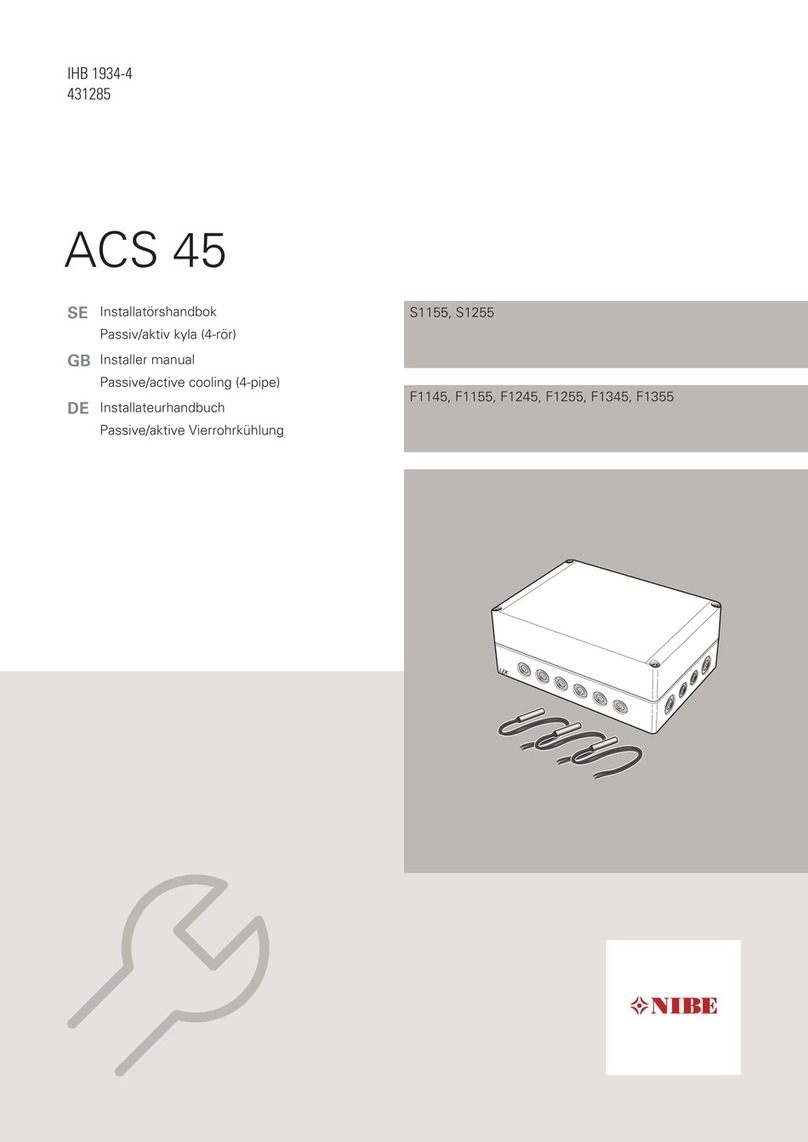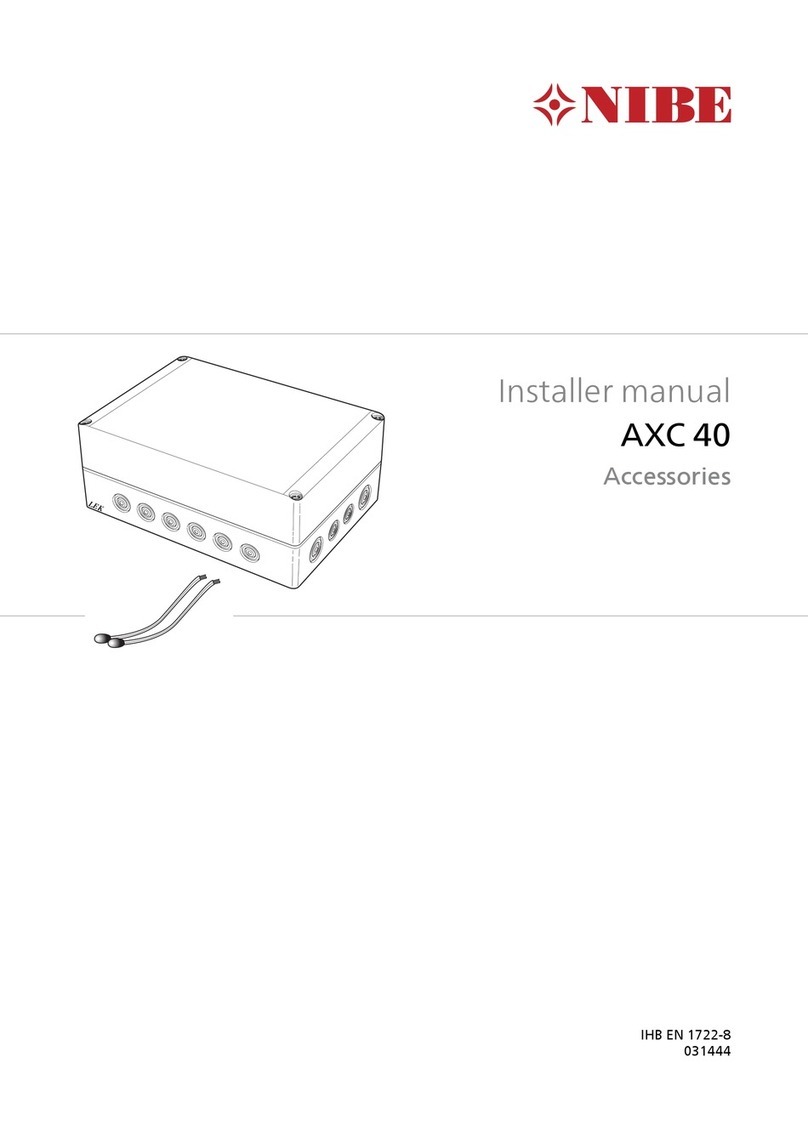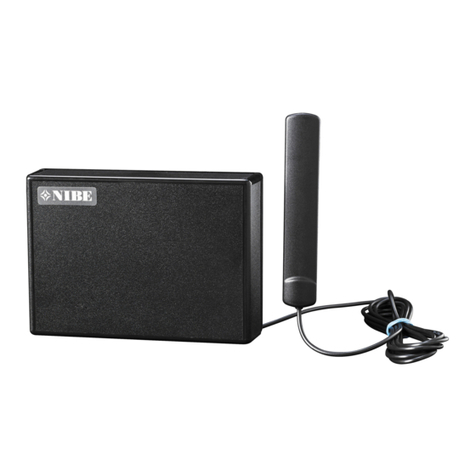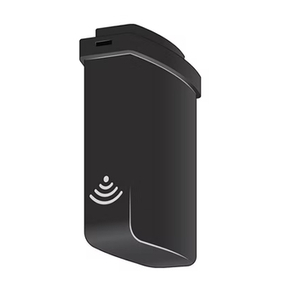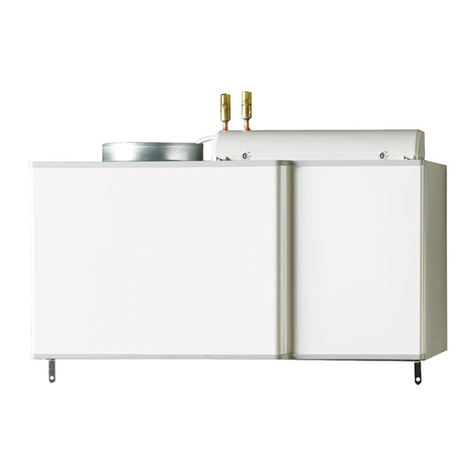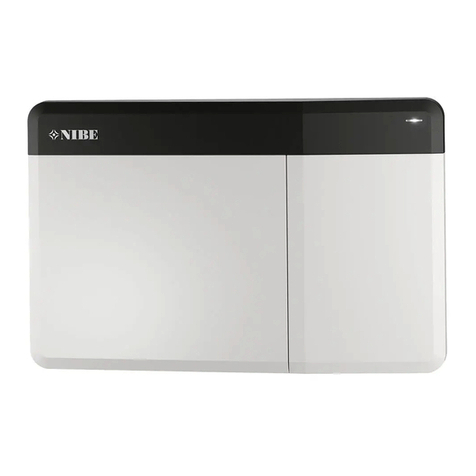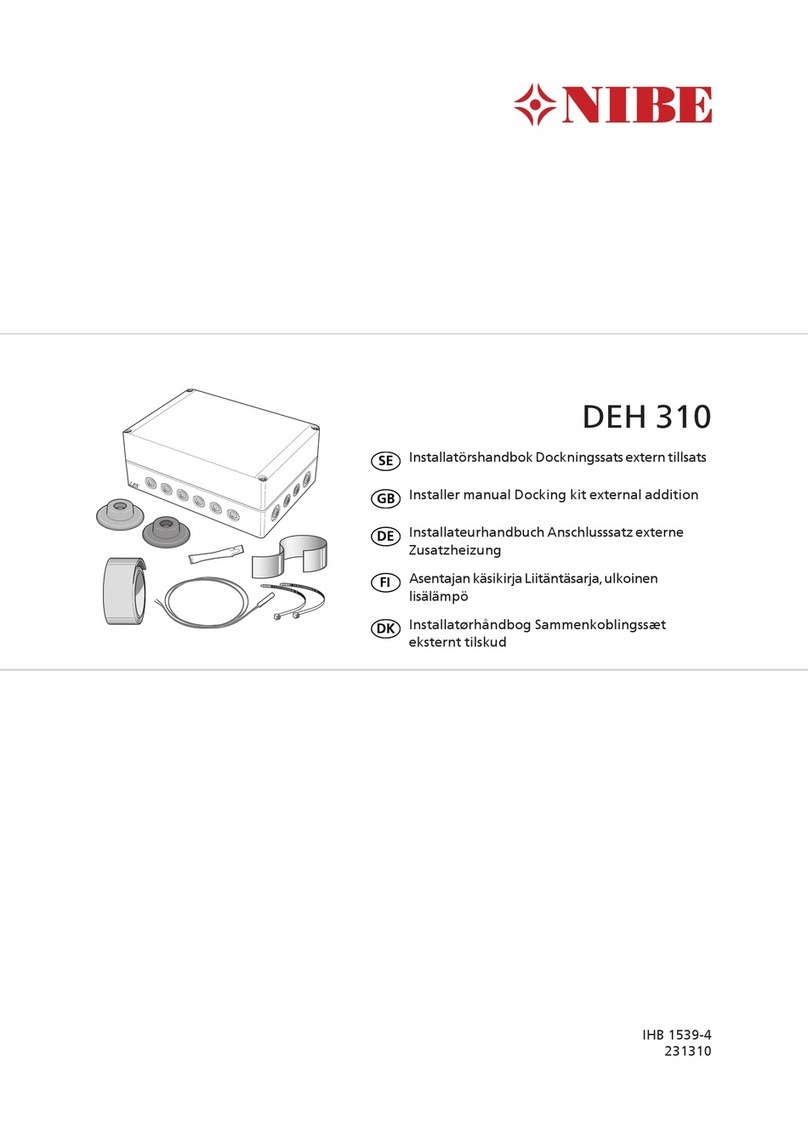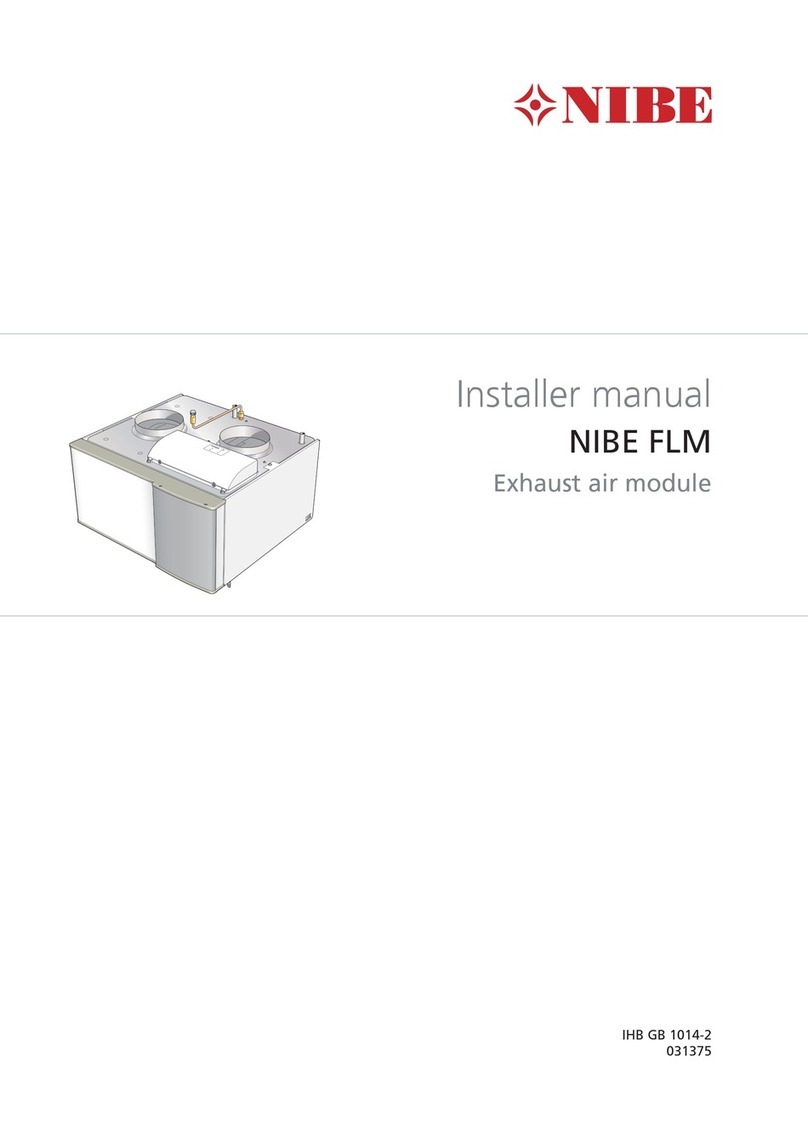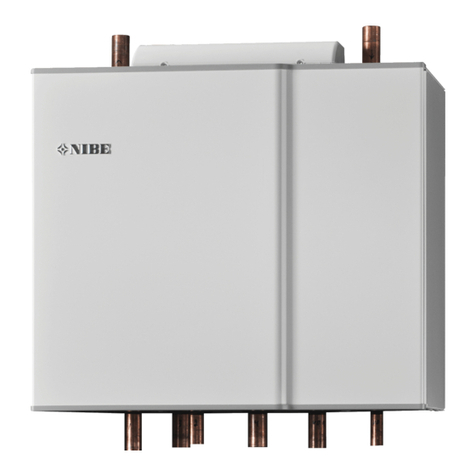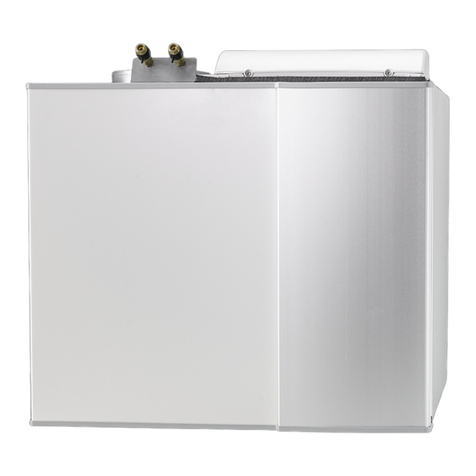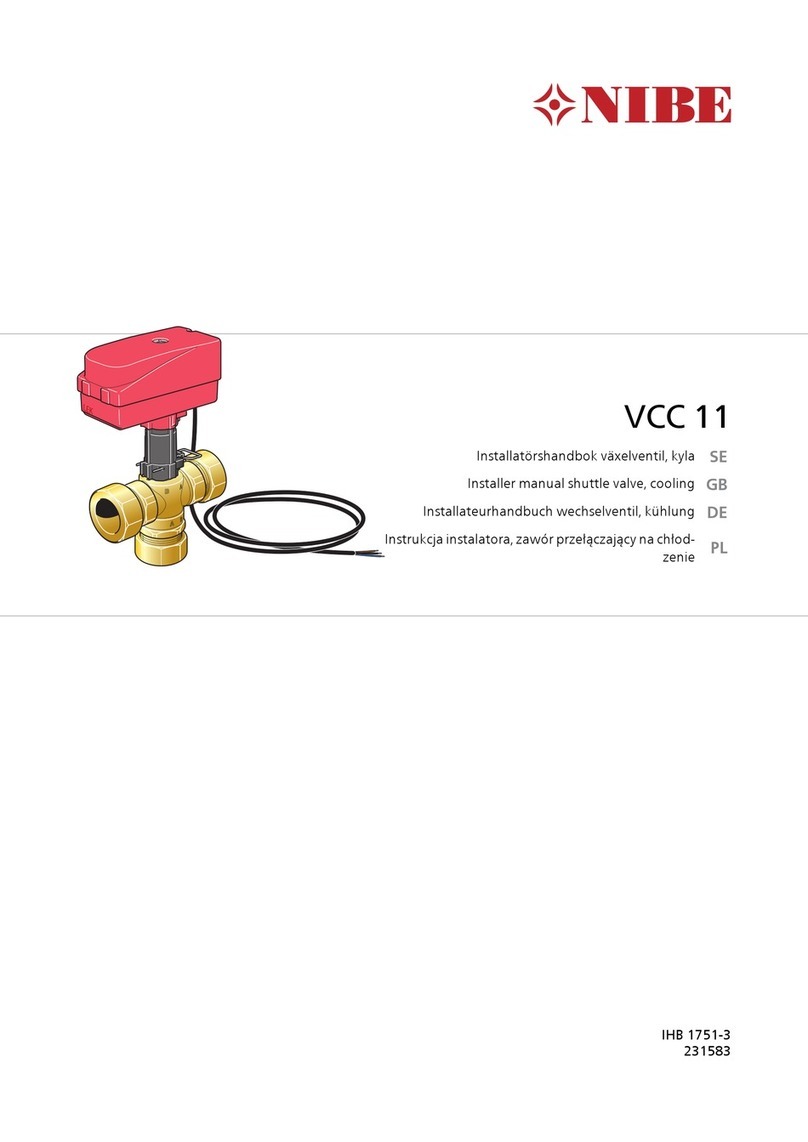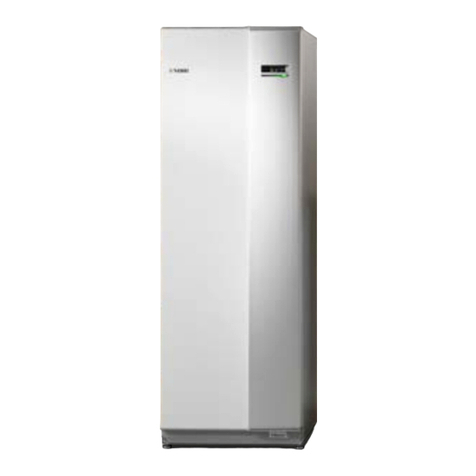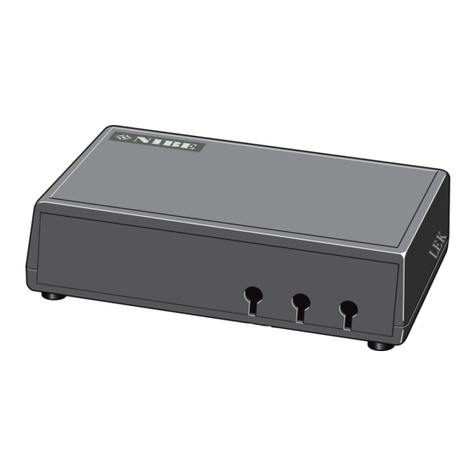
Contact with VVM 500
EXTERNAL INFORMATION
When the indoor module door is closed, information can be
received via an information window and a status lamp.
Information window
Status lamp
Information window
The information window shows part of the display that is
on the display unit (located behind the door to the indoor
module). The information window can display different types
of information, e.g. temperatures, clock, etc.
You determine what is to be displayed in the information
window. Your own combination of information is entered
using the display unit. This information is specific to the in-
formation window and disappears when the front hatch of
the indoor module door is opened.
Status lamp
The status lamp indicates the status of the indoor module:
continuous green light during normal function, continuous
yellow light during activated emergency mode or continuous
red light in the event of a deployed alarm.
Alarm management is described on page 35.
DISPLAY UNIT
A
B
C
D
E
F
Display
Status lamp
OK button
Back button
Control knob
Switch
INDOOR CLIMATE
MY SYSTEM INFO
HOT WATER
There is a display unit behind the indoor module door, which
is used to communicate with VVM 500. Here you:
•switch on, switch off or set the installation to emergency
mode.
•set the indoor climate and hot water as well as adjust the
installation to your needs.
•receive information about settings, status and events.
•see different types of alarms and receive instructions
about how they are to be rectified.
Display
Instructions, settings and operational information are
shown on the display. You can easily navigate between
the different menus and options to set the comfort or
obtain the information you require.
A
Status lamp
The status lamp indicates the status of the indoor mod-
ule. It:
•lights green during normal operation.
•lights yellow in emergency mode.
•lights red in the event of a deployed alarm.
B
OK button
The OK button is used to:
•confirm selections of sub menus/options/set val-
ues/page in the start guide.
C
Back button
The back button is used to:
•go back to the previous menu.
•change a setting that has not been confirmed.
D
Control knob
The control knob can be turned to the right or left. You
can:
•scroll in menus and between options.
•increase and decrease the values.
•change page in multiple page instructions (for example
help text and service info).
E
Switch
The switch assumes three positions:
•On ()
•Standby ( )
•Emergency mode ( )
Emergency mode must only be used in the event of a
fault on the indoor module. In this mode, the compressor
switches off and the immersion heater engages. The in-
door module display is not illuminated and the status
lamp illuminates yellow.
F
USB port
The USB port is hidden beneath the plastic badge with
the product name on it.
The USB port is used to update the software.
Visit nibeuplink.com and click the "Software" tab to
download the latest software for your installation.
G
NIBE VVM 500Chapter 2 | The heating installation – the heart of the house8












